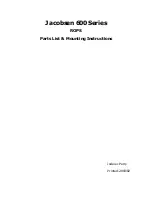
Stainless steel is an alloy of steel with chromium and nickel that increase
the metal’s resistance to rust and corrosion. Yet, if not properly cared for,
stainless steel can rust and corrode. Exposure to air provides the
passivation, or oxide layer coating, for clean stainless by producing a thin,
durable chromium-oxide film that forms rapidly on the alloy surface to
give stainless its characteristic “stainless” quality. Also exposure of the
surface to other oxidizing environments can produce a passivating film or
coating.
However, if free oxygen is not available due to scale or contamination
buildup the metal surface may become vulnerable to rusting and corrosion
as well as pitting. Maintaining neutral pH and conducting frequent
cleanings with detergent and water can obtain years of trouble-free service
from stainless steel products.
Caution
Electrolysis can damage stainless steel. This occurs when an object
is allowed to rest directly on the surface of stainless steel, trapping moisture
that becomes oxygen starved, but is surrounded by water-containing
oxygen.
s
Check pH regularly. If pH is <6.0, add disodium phosphate to increase
pH to a 7 to 9 value. Sodium carbonate or sodium bicarbonate may be
used but they tend to form scale that must be rinsed out regularly. If pH is
>10.0, add sodium bisulfate to decrease pH to a 7 to 9 value. Avoid adding
harsh alkalines or acids since these may cause localized corrosion and result
in unstable pH.
If it is necessary to use the following chemicals, limit exposure time to a
maximum of 3 hours and always clean surfaces immediately after use.
Chemicals that should be limited to a 3 hour maximum exposure time to
stainless steel are:
7-4
MaxQ 7000
Thermo Scientific
Section 7
Maintenance
Care and Cleaning of
Stainless Steel
The pH Factor
Special Considerations
Aluminum chloride
E.D.T.A.
Potassium permanganate
Barium chloride
Ferrous chloride
Potassium thiocyanate
Calcium chloride
Lysol
Sodium hypochlorite
Chlorinated Lime
Mercury salts
Stannous chloride
Citric acid (boiling)
Phenol
Tartaric acid
Dakin’s solution









































